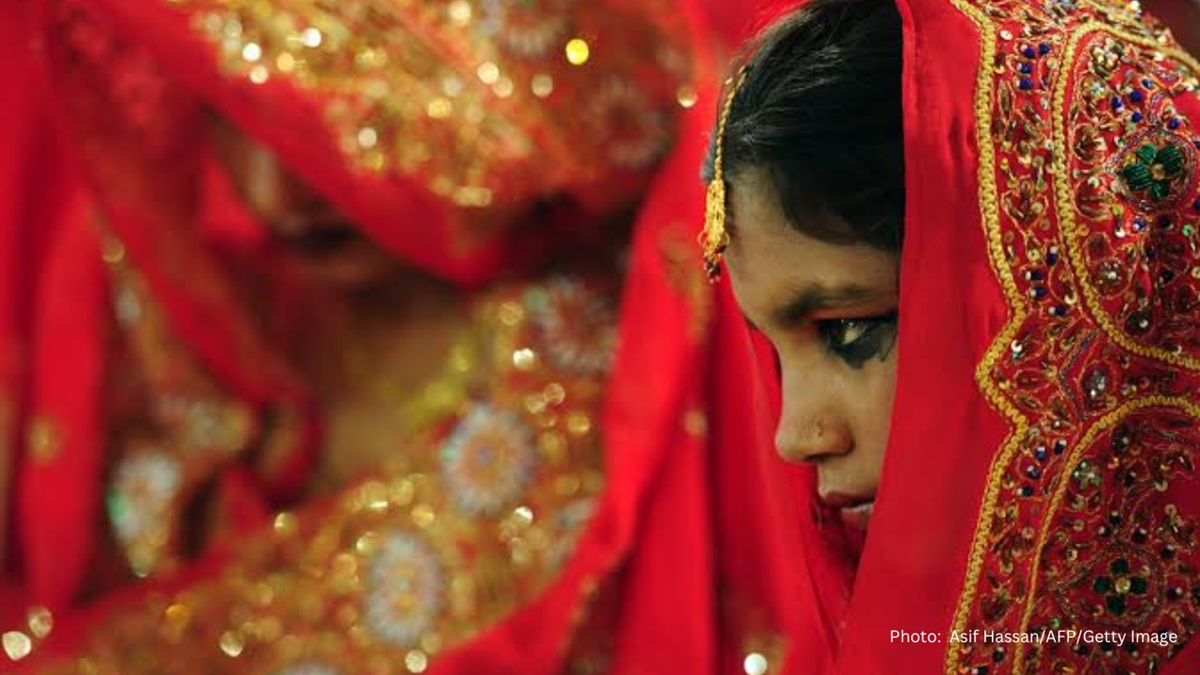Child Marrige: An Ultimate Barrier to Achieve SDG in The Case of Bangladesh
Ishrat Jahan Shithi | 28 April 2024
Child marriage, which is emphasized in SDG 5 (Gender Equality), is recognized as a grave human rights abuse under international law because it adversely affects females' entitlements to consent to getting married, schooling, equity, a fair chance, medical services, being free from bias, violent behavior, abuse, and the absence of fear. There are seventeen SDGs, which are targets for future international development, that the UN has established for the years 2016–2030. It is necessary to increase public awareness of child marriage since it stands in the way of attaining the Sustainable Development Goals (SDG).
According to UNICEF, the UN agency for children, Bangladesh ranks fourth globally in terms of the prevalence of child marriage. Bangladesh's 2020 Child Marriage Report states that there are 38 million child brides in Bangladesh. Thirteen million of them got married before turning fifteen. The number of females between the ages of 20 and 24 getting married before the legal age of eighteen has declined from 73% in 1993–94 to 69% in 1996–97 and 65% in 1999–20, dropping to 59% in 2014–15 and showing no significant improvement since 2017–18.
Child marriage often prevents education and skill development for women, leading to unwanted pregnancies, malnutrition, high maternal mortality rates, and uterine cancer. Lack of knowledge about sexual and reproductive health also contributes to these issues, affecting both mothers and premature children. Education for females has a demonstrable multiplier impact; women with education have better health, share a greater portion of the official job market, earn a greater amount of money, have a smaller family, and provide their children with improved medical treatment and educational opportunities compared to women without education (Klugman et al. 2014).
According to experts, Bangladesh has made significant strides in a lot of areas; however, it has made little headway in stopping child marriage. When it comes to the prevalence of child marriage, Bangladesh is in fourth place globally, according to UNICEF. The Bangladeshi economy suffers from early childhood marriage and may perpetuate a chain of generational poverty. Childhood marriages between boys and girls are more likely to lack the skills, knowledge, and employment possibilities that would enable them to help their families escape insolvency and support the social and economic development of their nation. It has been concluded that socioeconomic determinants, for instance, poverty, play a significant role in the increase in child marriage in Bangladesh. According to Asian Development Bank Basic Statistics for April 2023, as more than 20 percent of Bangladeshis continue to live below the poverty threshold ($2.15 per day), that will promote early marriage countrywide. The conclusion is that the government ought to amend the present pediatric marriage regulations. Early marriage is an impediment to attaining the SDGs, and it is crucial to increase public consciousness of its detrimental effects.
The International Center for Research on Women's (ICRW) "Solutions to End Child Marriage" suggests several strategies to prevent child marriage. To combat child marriage, it is crucial to improve girls' access to quality education, promote legislation and policies supporting female empowerment, and provide economic support. Elderly and senior family members can trigger child marriage, and efforts must be made to change their thinking. Climate change is linked to early marriage in climate refugee families. A unified system for checking national identity card and birth registration information is essential. The government must implement the Early Marriage Restraint Act correctly, which could potentially reduce child marriages. Credibility and transparency methods must be implemented for the act's effectiveness.
Half of the [SDG] targets entail child marriage, which puts obstacles in the way of accomplishing the objectives. Thus, child marriage must end in order for the SDGs to be accomplished. In addition to protecting girls and women from lost chances for education and employment, reducing child marriage will also lower the risk of pre- and postnatal illness, lower maternal and infant mortality rates, and malnutrition. In the long term, it will benefit the entire nation by decreasing population growth and poverty. It will also ultimately result in less intimate partner violence and more decision-making authority for women in the home. To reach the national goal of banning child marriage, more forceful action and political determination will be needed. To reach this goal, the nation must advance eight times faster than the rate shown over the previous ten years, according to UNICEF estimates. The nation must reduce child marriage 17 times quicker than it is now if it is to meet the SDG aim of ending child marriage by 2030.
Bangladesh needs institutionalized strategies to address societal norms, apply laws properly, and direct interventions in order to solve the recurring problem of child marriage. For prompt and successful interventions, as well as for informed policymaking, accurate and current statistics regarding early childhood marriage are essential.
Ishrat Jahan Shithi, Research Assistant, Centre for Governance.
Views in this article are author’s own and do not necessarily reflect CGS policy.
